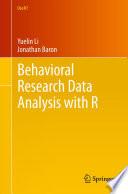
Financial Analysis for HR Managers
Tools for Linking HR Strategy to Business Strategy
HR leaders and practitioners: master the financial analysis skills you need to become true strategic business partners, gain an equal seat at the table, and get boardroom and CFO buy-in for your initiatives! In this one-of-a-kind book, Dr. Steven Director covers everything mid-to-senior-level HR professionals need to formulate, model, and evaluate their HR initiatives from a financial perspective. Drawing on his unsurpassed expertise working with HR executives, he walks through each crucial financial issue associated with strategic talent management, including quantifiable links between workforces and business value, cost-benefit analyses of HR and strategic financial initiatives, and specific issues related to total rewards programs, including stock, stock options, and pension costs. Unlike other finance books for non-financial managers, Financial Analysis for HR Managers focuses entirely on core HR issues. Director helps you answer questions such as: How do you model HR's financial role in corporate strategic initiatives such as the introduction of a new product line? How do you select bonus drivers to send the right signals to managers (and uncover suboptimal hidden signals you might be sending now)? How do you design compensation packages that are fully consistent with your goals? How do you identify and manage pension-finance costs and risks that can dramatically impact the long-term financial health of the business? HR leaders and aspiring leaders are under unprecedented pressure to provide credible, quantitative answers to questions like these. This is the one and only book that will help them do so.
- ISBN 13 : 0132996774
- ISBN 10 : 9780132996778
- Judul : Financial Analysis for HR Managers
- Sub Judul : Tools for Linking HR Strategy to Business Strategy
- Pengarang : Steven Director,
- Kategori : Business & Economics
- Penerbit : FT Press
- Bahasa : en
- Tahun : 2012
- Halaman : 304
- Google Book : http://books.google.co.id/books?id=hsuTwBnoimIC&dq=intitle:Hr+Management+Education&hl=&source=gbs_api
-
Ketersediaan :
HR leaders and aspiring leaders are under unprecedented pressure to provide credible, quantitative answers to questions like these. This is the one and only book that will help them do so.









